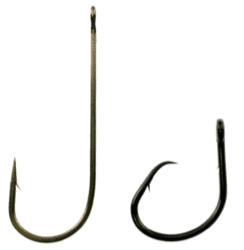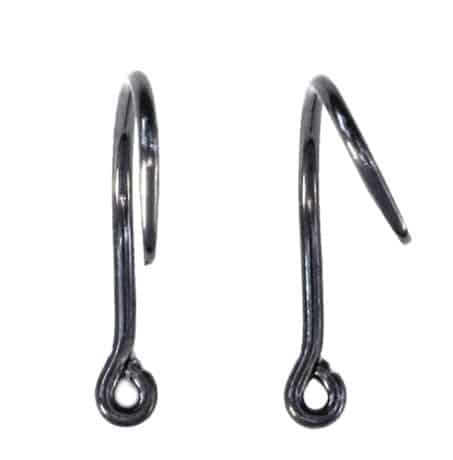Fishing hooks. As with any controversial subject, there is a bit of complexity. For reasons of brevity I won’t be covering all the nuances that the topic undoubtedly could! Which is a shame in some respects, as I do find it interesting. Suffice to say, as with any body of knowledge, fishing techniques and tools evolve. The fish hook itself was an innovation from spears. With new tools, we learn new skills to use them well. Fishing with different hooks similarly requires changes in technique.
But i’m getting ahead of myself. So lets start with the kinds of hooks there are – as I understand it, there are two basic types of single-pronged hooks used – J hooks and circle hooks. Due to its shape and exposed tip, J hooks have a greater likelihood of deep-hooking (when a hook catches in the gut or gills of a fish). In theory, when a hook is swallowed, the fisherman pulls the line so that the hook travels back up the throat to catch in the mouth. But with J hooks, the hook can catch anywhere along the way.

Most of the fish we catch with J hooks are gut hooked or snagged somewhere in the throat/gills. This causes massive damage to the critical organs of the fish and leaves them critically wounded.” –Miami Fishing
“The design of the circle hook would appear to render it impotent — with the point of the hook aimed back toward the shank, how could it possibly catch fish? Well, therein lies its beauty. Circle hooks are less likely to snag simply because the point of the hook is not exposed…the hook will be in the (fish’s) mouth for a second or two before it swallows. As the (fish) turns, the hook drags across the fish’s mouth, lodging in the corner of the jaw. As it continues to move, the hook rotates until the gap of the hook fits around the jaw. Then the point sinks in and the (fish) is hooked.” –Fishing for Dummies
“Studies from the Marine Resource Research Institute (MRRI) have shown that offset circle hooks have deep hooking rates (gut and throat hooking), of 23%, and mortalities of 10% (South Carolina Dept. of Natural Resources data). By contrast, sailfish catch and release data show deep hooking catches of just 2% with standard circle hooks. (Prince et al. 2002). “ – NOAA

“Offset circle hooks have been proven to be less effective with less strike and penetration force. To visualize this inefficiency, imagine attempting to drive a nail when it’s placed at an angle to the board. Its energy is not directed to the point squarely making it much more difficult.” – Bryan Kimata, BCH News guest contributor
So offset circle hooks have been found to be both harmful and inefficient – which doesn’t make for an ideal choice for either the fishermen or for the fish. What about the effectiveness of inline circle hooks then?
“Circle hooks have been used by commercial fishermen for decades due to their ability to efficiently catch fish. The principle behind the hook is simple. After the hook has been swallowed the fisherman applies pressure to the line, pulling the hook out of the stomach. The unique hook shape causes the hook to slide towards the point of resistance and embed itself in the jaw or in the corner of the fish’s mouth. The actual curved shape of the hook is intended to keep the hook from catching in the gut cavity or throat. The advantage to the fisherman is that hooking is automatic. No hook set required.” – Chesapeake Light Tackle
So it appears that for nearly all situations, inline circle hooks should be the hooks of choice to protect wildlife, but also for their effectiveness. There are certainly specific cases to be made for different hooks, but as a general rule it would help on many levels to promote the use of inline circle hooks.
Thanks for reading part II! If you have experience with fishing, I’d love to hear your thoughts. Look out for part III – while it looks like circle hooks have a number of advantages, there is an even better type from a conservation perspective – inline Barbless Circle Hooks. And they work too!
=> Click here for part III
